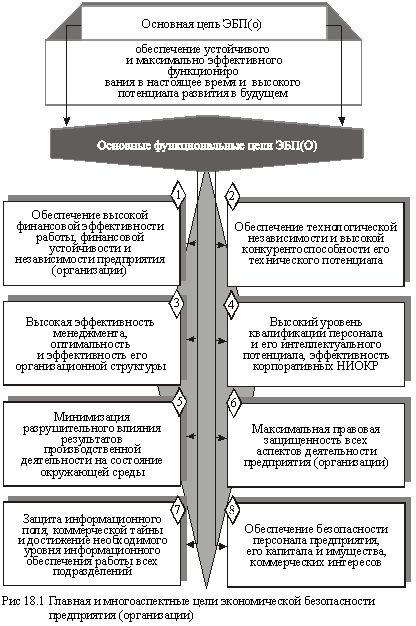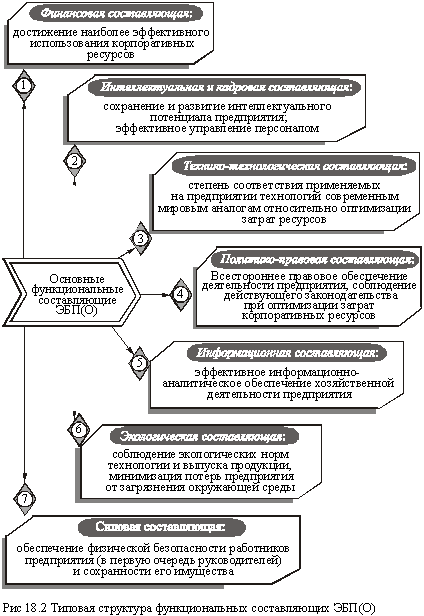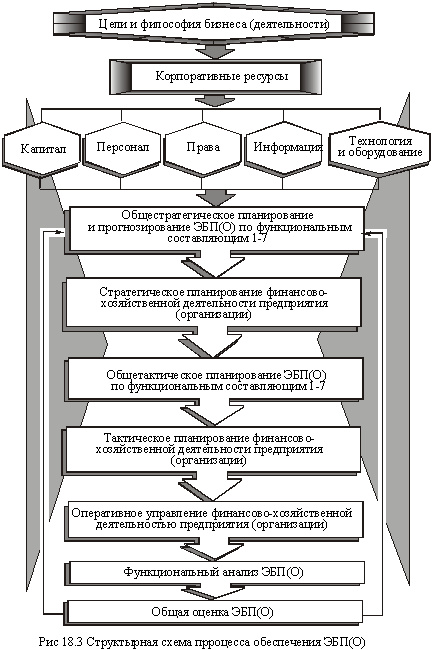home
 Economy Economy
 Economy of the enterprise - Pokropivny SF Economy of the enterprise - Pokropivny SF
|
Economy of the enterprise - Pokropivny SF
SECTION 5. ANTI-CRISIS SYSTEM OF ECONOMIC ACTIVITIES
Chapter 18. Economic security of the enterprise (organization)
Key terms and concepts
Environmental safety of the enterprise (organization) -EBP (O); Functional purposes; A typical support scheme; Assessment of the level; Analysis map; Financial component; Intellectual and human resources; Technical and technological leaving; Political and legal component; Information component; Ecological component; Power component; Model of the company's security system; Security services firm
18.1 Substantive-typological characteristics of the economic security of the enterprise (organization)
Concepts and goals
In the market conditions of economic management, an important (if not decisive) value is acquired by economic security of all subjects of entrepreneurial and other types of activities.
The economic security of a firm (enterprises, organizations) is the state of corporate resources (capital, personnel, information and technology, equipment and equipment, rights) and entrepreneurial opportunities, which ensures the most effective use of them for stable operation and dynamic scientific, technical and Social development, prevention of internal and external negative influences (threats).
The necessity of constant observance of economic security is explained by the objective task facing each business entity to ensure stable functioning and achievement of the main goal of its activity. The level of economic security is determined by how effectively its management and specialists (managers) manage to prevent possible threats and eliminate the damage from negative impacts on certain components of economic security.
Sources of negative influences can be: 1) the conscious or unconscious actions of individual officials and business entities (public authorities, international organizations, competing enterprises); 2) the influence of a wide variety of objective circumstances (the state of the financial situation, scientific discoveries and technological developments, force majeure, etc.).
Depending on their subjective conditionality, the factors of negative impact on economic security can be objective and subjective . Objective are considered such negative impacts that arise without participation and in addition to the will of a particular enterprise or its individual employees, and subjective ones are the result of inefficient operation of the enterprise as a whole or its employees (primarily managers and functional managers).
The main and functional goals of the EBP (O) are formulated and shown in Fig. 18.1.

Structural elements and scheme of the organization of the EBP (O)
The main and functional goals assume the formation of the necessary structure-forming elements and a general scheme for organizing the EBP (O). A typical structure of the functional components of economic security with a practical description of their essence is shown in Fig. 18.2.

The general outline of the process of organizing economic security includes specific actions (activities), carried out sequentially or simultaneously (Figure 18.3).

Only if the necessary actions (activities) are carried out in the necessary amount can be achieved the appropriate level of economic security of the firm (enterprise, organization), which allows to function normally and successfully solve the tasks in the conditions of competition in the domestic and foreign markets.


Comments
When commenting on, remember that the content and tone of your message can hurt the feelings of real people, show respect and tolerance to your interlocutors even if you do not share their opinion, your behavior in the conditions of freedom of expression and anonymity provided by the Internet, changes Not only virtual, but also the real world. All comments are hidden from the index, spam is controlled.